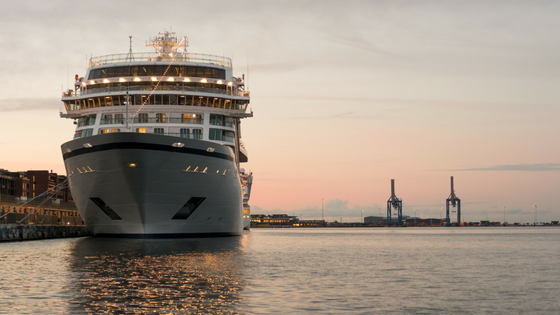In 2017, cruise ships failed more health inspections than they had in the last ten years. In all, 14 ships received failing grades—which is a significant increase from 2016, when only two ships failed their inspections.
The Center for Disease Prevention and Control oversees these inspections. The U.S. Public Health Service conducts period health inspections through their Vessel Sanitation Program. Each ship under the program’s jurisdiction receives a minimum of two inspections per year.
Inspectors show up unannounced while a ship is docked at a U.S. port. The entire ship can be inspected during the investigation, but there are eight main areas on the vessel that typically receive the most attention: Hotel accommodations, swimming pools, dining rooms and kitchens, child activity centers, potable water systems, medical facilities, ventilation systems and other common areas on the ship.
Inspectors ensure ships are meeting maintenance, cleanliness, and other general safety requirements. But they also make sure cruise line staff are working within specified protocols.
For instance, viruses can spread quickly in the close quarters of a cruise ship. Workers must document incidents of gastrointestinal illnesses and certain other health conditions.
As recently as December of 2017, there was a major stomach bug outbreak that affected nearly 200 people on board the Royal Caribbean Cruises’ RCL.
Depending on the circumstances, the violations can range from minor to severe. Fees for noncompliance can be anywhere from $1,495 to $17,940. The larger the ship and cruise line, the higher the fee. These fees help to fund the Vessel Sanitation Program.
Carnival Cruise Lines operated five of the ships that failed inspections in 2017. And they’ve already had another ship fail an inspection in 2018.
In these instances, inspectors found violations of fruit flies near a buffet, cleaning solution that didn’t contain chlorine, and cleaned dishes that were stored next to soiled items. The inspections included other citations as well.
“We take these inspections very seriously,” Carnival said in a statement. “And share lessons learned and best practices with every ship in our fleet. Our most important focus is always the safety and well-being of our guests. We remain confident that our shipboard operations, especially in food handling and preparation, are of the highest quality and we are always committed to delivering an exceptional experience to our guests.”
The rise in failed health inspections comes at a time when more and more travelers are choosing cruises for their vacations. According to the Cruise Line Industry, more than 27 million passengers are expected to travel on cruise ships in 2018.
That’s a 53% increase over the past 10 years.
The Cruise Line Industry Association said that “The cruise industry has a long history of ongoing review and improvement. We will continue to seek out opportunities to enhance industry best practices.”
It’s clear that there’s been a sudden increase in the number of failed inspections over the last couple of years. But the reasoning for that is not so clear.
The frequency of ships not passing has certainly varied over the years,” says Ross Klein, a professor at Memorial University of Newfoundland who tracks operational incidents involving cruise ships. “I’m not sure if ships are being less vigilant or if the people conducting the inspections are being more vigilant.”
Cruise ship travelers must look to the CDC’s website if they want to find information on health inspection results of a particular cruise ship and/or cruise line.
